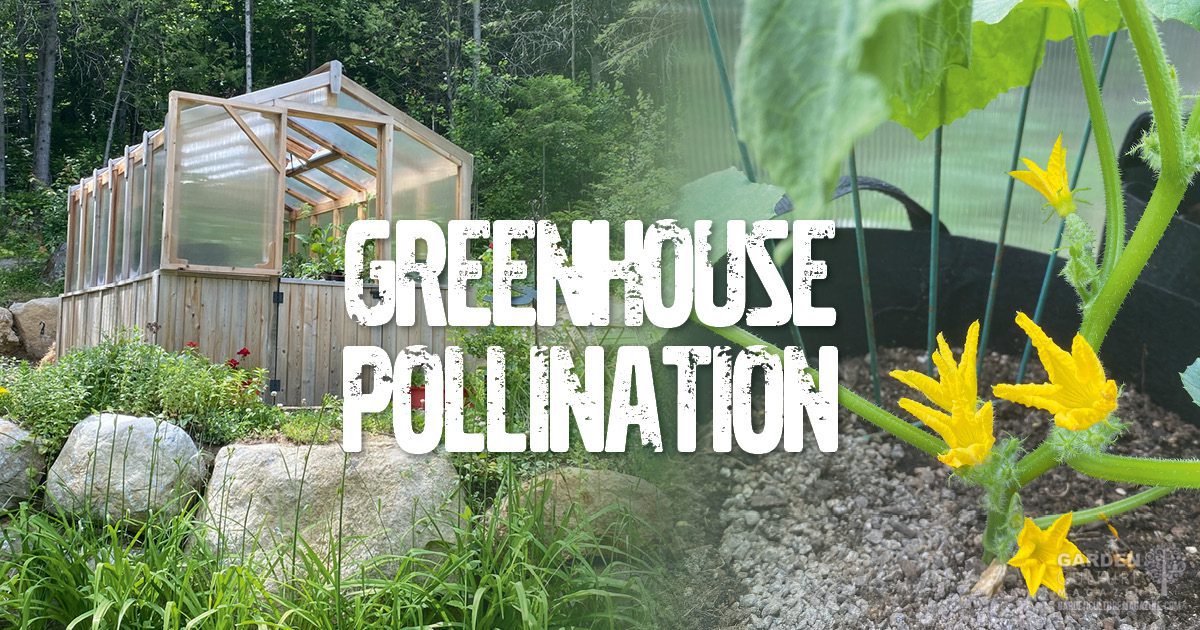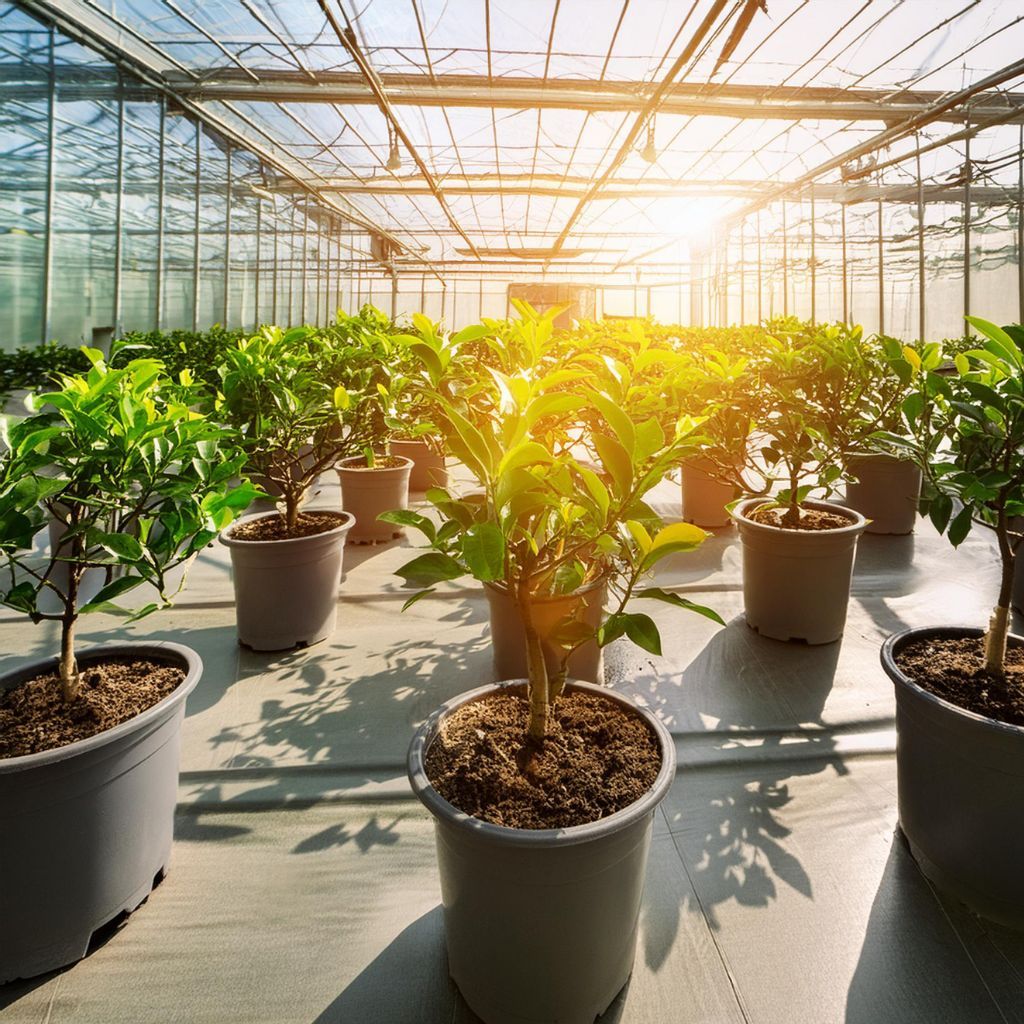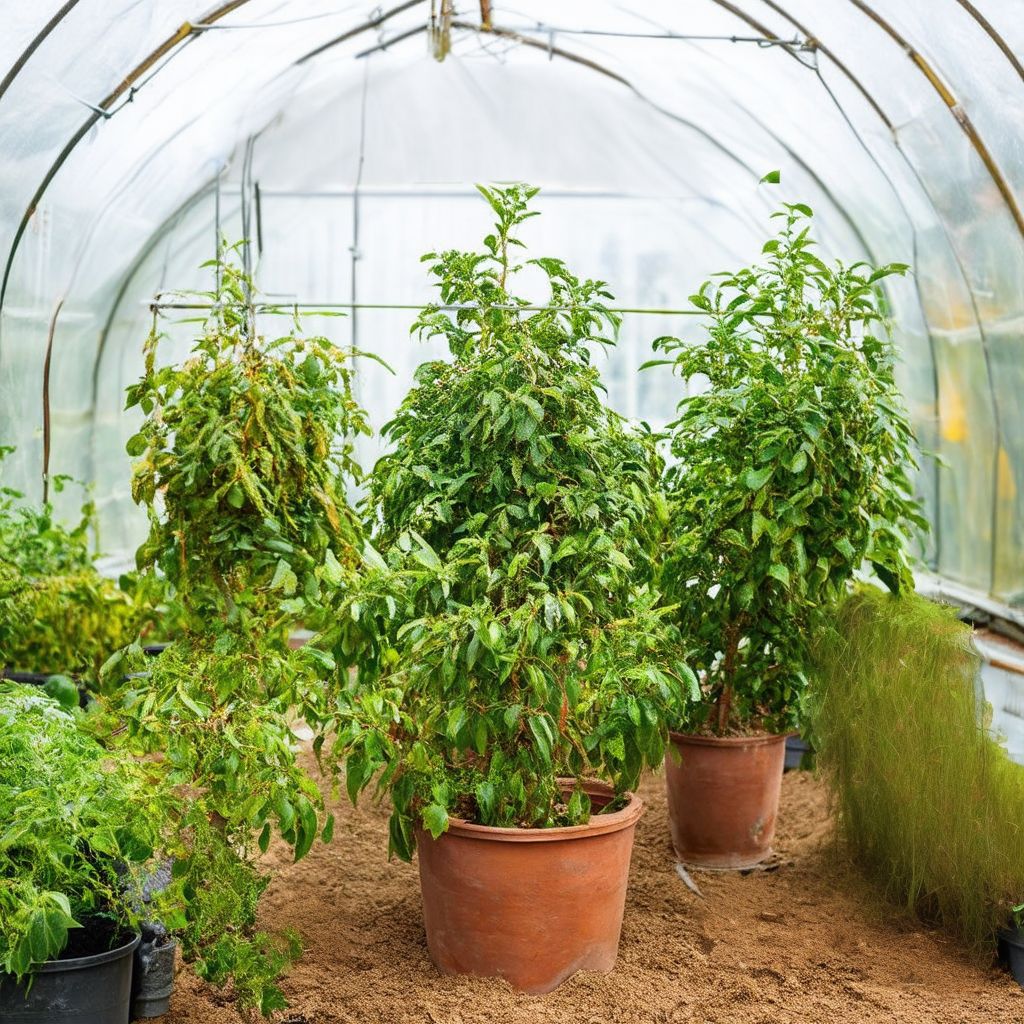Key Takeaways: Greenhouse Citrus Trees
-
Choosing dwarf varieties of citrus trees is best for greenhouse space optimization.
-
Regular pruning is essential for shaping the tree and ensuring a healthy growth.
-
Maintaining the right temperature and humidity levels is crucial for citrus tree survival and fruit production.
-
Proper watering and fertilization are key to a thriving citrus tree in a greenhouse environment.
-
Understanding pollination, pest, and disease management can significantly improve your citrus yield.
The Art of Greenhouse Citrus Tree Care
Imagine plucking a sun-warmed, juicy orange straight from the tree in the dead of winter. That’s the magic of growing citrus trees in a greenhouse. It’s about creating a slice of tropical paradise, no matter what the weather outside is doing. And while it might sound like a challenge, with a little know-how, you can have your greenhouse brimming with the sweet scent of citrus blossoms and vibrant fruits.
Pruning: Shaping Your Tree for Success
Pruning isn’t just about making your tree look good, it’s about helping it thrive. When you prune, you’re guiding the tree’s energy where it’s needed most – to the fruit. Here’s how you can do it:
-
Start pruning in the late winter or early spring before the new growth starts.
-
Look for any dead, damaged, or diseased branches and cut them off at the base.
-
Thin out the center of the tree to allow sunlight to reach the interior branches.
-
Trim back overly long branches to encourage more fruit production near the tree’s main structure.
Remember, a little goes a long way. You don’t want to over-prune and stress the tree.
Pollination Practices for Encouraging Fruitfulness
Most citrus trees are self-pollinating, but they still benefit from a helping hand. In the enclosed space of a greenhouse, where natural pollinators like bees are scarce, you might need to step in. Here’s what you can do:
-
Gently shake the branches to distribute the pollen.
-
Use a small paintbrush to transfer pollen from flower to flower.
-
Consider introducing beneficial insects, or even a beehive, if your greenhouse is large enough.

“How To Encourage Pollination Inside A …” from gardenculturemagazine.com
With these simple steps, you’ll ensure your trees have the best chance to produce a bountiful harvest.
Combatting Citrus Culprits: Pest and Disease Management
Even in a greenhouse, citrus trees can fall prey to pests and diseases. Aphids, spider mites, and scale insects are common foes. To keep these pests in check:
-
Inspect your trees regularly for signs of infestation.
-
Introduce natural predators, like ladybugs, to control aphid populations.
-
Use horticultural oils or soaps as a treatment for severe infestations.
Keep an eye out for common diseases like citrus canker or greening. If you spot symptoms, remove the affected areas immediately and disinfect your tools to prevent spreading.
And now, let’s get into the specifics of choosing the right citrus tree for your greenhouse.
Choosing Your Citrus Champions
Not all citrus trees are created equal, especially when it comes to growing them in a greenhouse. You’ll want to select varieties that not only fit your space but also your climate and taste preferences. Here’s a quick guide:
When choosing a citrus tree for your greenhouse, consider:
-
The size of your greenhouse: Dwarf varieties are more compact and manageable.
-
Your local climate: Some citrus trees are more tolerant of temperature fluctuations than others.
-
Your taste preferences: Do you dream of sweet oranges, tangy lemons, or something more exotic?
Next, let’s delve into the differences between dwarf and standard citrus trees.
Dwarf vs. Standard Varieties: What Suits Your Space?
Space is a premium in any greenhouse, so choosing the right size tree is crucial. Dwarf citrus trees are often the go-to for greenhouse growers because:
-
They take up less space, allowing more room for other plants or trees.
-
They’re easier to manage and prune.
-
They bear fruit sooner than their standard counterparts.

However, standard trees can also have a place in larger greenhouses. They can provide more fruit over time, though they require more patience and space to flourish.
The Sweetest Picks: Popular Citrus Trees for Greenhouses
With a variety of citrus trees available, it can be tough to choose. Here are some top picks for greenhouse growing:
-
Meyer Lemon: Compact and cold-hardy, perfect for sweet and tangy lemons.
-
Dwarf Valencia Orange: Ideal for those who want to squeeze their own orange juice.
-
Kaffir Lime: Its leaves are a staple in Southeast Asian cuisine, and the fruit is a bonus.
-
Calamondin: Small and decorative, with fruit that’s a cross between a kumquat and a tangerine.
Remember, the best citrus tree for your greenhouse is one that you’ll enjoy caring for and harvesting from.
Creating the Perfect Citrus Haven
Now that you’ve selected your citrus trees, it’s time to create the perfect environment for them to thrive. Citrus trees need plenty of light, the right temperature, and proper nutrition to produce those juicy fruits you’re dreaming of.
The Ideal Temperature Range to Keep Citrus Thriving
Citrus trees love warmth but not too much heat. Aim to keep your greenhouse temperatures between 55°F at night and 85°F during the day. During the winter months, make sure the temperature doesn’t drop below 50°F, as citrus trees can be sensitive to cold.
Most importantly, monitor the temperature regularly and adjust your heating or ventilation as needed. This will help prevent stress on the trees, which can lead to a drop in fruit production.
Let’s talk about the importance of light for your citrus trees.
Let There Be Light: Ensuring Adequate Sunlight
Citrus trees need about 8-12 hours of sunlight daily. If your greenhouse doesn’t provide enough natural light, especially during the shorter days of winter, consider installing grow lights. Position them above the trees, ensuring that each one receives an even distribution of light.
Remember, too much direct sunlight can lead to leaf burn, so use shade cloths if necessary to protect your trees during the hottest part of the day.
Soil and Nutrition: The Foundation of Growth
The right soil mix is essential for citrus trees. They prefer well-draining soil that’s rich in organic matter. You can create your own mix using:
-
One part peat moss or coconut coir for moisture retention.
-
One part perlite or vermiculite for aeration.
-
One part compost or well-rotted manure for nutrients.
Feed your citrus trees with a balanced fertilizer that’s high in nitrogen during the growing season. Slow-release formulas work great for consistent feeding without the risk of burning the roots.
Watering Wisdom: Quenching Citrus Without Overdoing It
Watering your citrus trees is a bit of an art form. They like to stay moist but not soggy. Overwatering can lead to root rot, while underwatering can stress the tree and impact fruit production. Here’s a simple rule of thumb:
-
Water when the top inch of soil feels dry to the touch.
-
Reduce watering in the winter when the trees are not actively growing.
-
Ensure good drainage to prevent water from pooling at the roots.
With these tips, you’re well on your way to becoming a citrus tree whisperer. But why go to all this trouble? Let’s explore the benefits of growing citrus trees in a greenhouse.
Why Grow Citrus Trees in a Greenhouse?
There’s something special about growing citrus trees in a greenhouse. It’s not just about the fruits—it’s about the journey. But why choose a greenhouse over an outdoor garden for your citrus trees? Here’s why:
Your Year-Round Supply of Zesty Flavors
Greenhouses provide a controlled environment, which means you’re not at the mercy of the weather. Whether it’s blistering hot or freezing cold outside, your citrus trees can still flourish. That means fresh lemons for your tea, limes for your salsa, and oranges for your juice, any time you want them. The joy of picking a ripe, sweet fruit in the dead of winter is unmatched.
The Joys of Cultivation Regardless of Climate
Greenhouses break down the barriers of traditional growing seasons and climates. They allow you to cultivate citrus varieties that would never survive the winter in your region. Plus, tending to your greenhouse can be incredibly therapeutic, giving you a lush, green sanctuary all year round.

From Blossoms to Basket: Harvesting Time
When your citrus trees are abloom with fragrant flowers, you know the fruits are not far behind. But the key to a successful harvest is knowing when and how to pick your citrus fruits. For more insights, explore our guide on maximizing crop yields which includes tips on the best time to harvest different types of greenhouse-grown produce.
The anticipation builds as the fruits swell and slowly change color. It’s tempting to pluck them at the first hint of ripeness, but patience here is a virtue. Citrus fruits continue to sweeten on the tree, so give them time to reach their full flavor potential.
One of the best parts about greenhouse-grown citrus is that the fruits can hang on the tree longer without the threat of frost or pests. This extended time on the tree can lead to even tastier results.
Example: A Meyer Lemon typically takes about 6-9 months from blossom to ripe fruit. You’ll know it’s ready when the fruit is a deep, golden yellow and gives slightly to a gentle squeeze.
Recognizing Ripeness: When to Pick Your Citrus Fruits
Here’s how you can tell when it’s time to harvest:
-
Color: Look for a consistent hue typical of ripe fruit for that variety.
-
Feel: The fruit should feel heavy for its size and have a slight give when pressed gently.
-
Taste: If you’re unsure, taste one! The flavor should be vibrant and sweet, with the expected level of tartness for the variety.
Once you’ve determined it’s time to pick, use a pair of scissors or pruning shears to snip the fruit off with a short piece of stem attached. This helps prevent damage to both the fruit and the tree.
Handling Your Harvest: Post-picking Care and Storage
After harvesting, handle your citrus fruits with care to prevent bruising. Citrus fruits don’t continue to ripen after being picked, so store them in a cool, dry place. They’ll typically last for several weeks when stored properly. For longer storage, consider refrigeration, but be aware that cold temperatures can diminish the flavor over time.
Troubleshooting Common Greenhouse Citrus Issues
Even with the best care, sometimes citrus trees in greenhouses can run into trouble. From yellowing leaves to a lack of fruit, there are common issues that many gardeners face. Here’s how to tackle some of these challenges:
When leaves turn yellow, it can be a sign of nutrient deficiency, overwatering, or poor drainage. To pinpoint the issue, check the soil moisture and adjust your watering schedule accordingly. If the soil is well-drained and the watering is on point, consider a soil test to determine if your tree is missing specific nutrients.
Example: If a nitrogen deficiency is causing the yellowing, the older leaves will turn yellow first, and the veins may remain green. A balanced, slow-release citrus fertilizer can correct this problem.
When Leaves Turn Yellow: Addressing Nutrient Deficiencies
Yellow leaves can be a sign of several different issues, but here’s what you can do:
-
Check for overwatering: Make sure your watering schedule allows soil to dry slightly between waterings.
-
Assess the soil: Use a soil test kit to check for deficiencies, particularly nitrogen, magnesium, and iron.
-
Adjust fertilization: Based on the soil test results, use a citrus-specific fertilizer to address any deficiencies.
By keeping a close eye on your trees and responding quickly to signs of distress, you can keep them healthy and productive.
Budding Woes: What to Do When Your Citrus Doesn’t Fruit
Sometimes, despite your best efforts, a citrus tree may flower but not produce fruit. This can be due to a lack of pollination, especially in the controlled environment of a greenhouse. To encourage fruit set:
-
Ensure there’s enough light: Citrus trees need plenty of light to produce flowers and fruit.
-
Hand-pollinate flowers: Use a small paintbrush to transfer pollen from one flower to another.
-
Control temperature and humidity: Extreme conditions can prevent fruit set, so keep the greenhouse environment stable.
With careful attention and a little troubleshooting, you can coax your citrus trees back into productivity.
Now that you’ve tackled the challenges and have your citrus trees flourishing, it’s time to think about what you’ll do with all that fresh fruit. Let’s explore some fresh ideas that will have you and everyone around you enjoying the fruits of your labor.
Fresh Ideas for Your Citrus Bounty
Once you’ve mastered the art of citrus tree care in your greenhouse, you’ll likely have more fruit than you know what to do with. Here are some creative ways to put your citrus bounty to use.
Nothing beats the taste of homegrown citrus. Whether you’re zesting lemons, squeezing limes, or peeling oranges, the fruits of your labor are a sweet reward. But beyond the usual, your harvest can transform into delightful treats and gifts that bring joy to others.
From homemade marmalades to refreshing citrus-infused water, your kitchen will become a hub of zesty creations. Experiment with candied peels as a sweet snack or garnish, or press your own juice for a taste that store-bought brands simply can’t match.
-
Preserve your lemons and limes in salt to create a condiment that elevates any dish.
-
Infuse olive oil with citrus zest for a zingy salad dressing or marinade.
-
Whip up a batch of lemon curd for a decadent spread on scones or pancakes.
Citrus in the Kitchen: Zesty Recipes and Ideas
Turn your kitchen into a citrus wonderland with recipes that showcase your harvest. Lemon bars, lime pies, and orange-infused cakes are just the beginning. Get creative with savory dishes too, like citrus-marinated chicken or fish, and citrus salsa for a tropical twist.
Sharing the Harvest: Tips on Gifting and Selling
Your citrus fruits can make wonderful gifts. Create beautifully wrapped baskets of mixed citrus for friends and family. If you have an abundance, consider selling your produce at local farmers’ markets or offering it to local cafes and restaurants.
-
Package your homemade marmalades and curds in pretty jars with custom labels for a personal touch.
-
Host a citrus tasting party to share the different varieties you’ve grown.
-
Donate excess fruit to food banks or community centers to spread the goodness.
Sharing your harvest is not only rewarding but also a great way to connect with your community. For more ideas on what to do with your greenhouse citrus, check out Growing Citrus in Your Greenhouse.
As you continue on your citrus-growing journey, questions may arise. Here are some frequently asked questions to help you navigate the world of greenhouse citrus tree care.
FAQs on Greenhouse Citrus Tree Care
Whether you’re a seasoned citrus grower or just starting out, it’s normal to have questions. Let’s address some of the most common inquiries about greenhouse citrus tree care.
How Often Should I Fertilize My Greenhouse Citrus Tree?
Your citrus trees need regular feeding to produce those luscious fruits. During the growing season, fertilize every four to six weeks with a balanced, citrus-specific fertilizer. In the winter, reduce this to once every two to three months since the trees’ growth slows down.
-
Use a slow-release fertilizer to provide a steady supply of nutrients.
-
Complement with liquid feedings for a quick nutrient boost when needed.
-
Always follow the instructions on the fertilizer packaging to avoid overfeeding.
Remember, a well-fed tree is a happy tree.
Can I Grow Citrus Trees in Containers Within the Greenhouse?
Absolutely! Growing citrus trees in containers is a fantastic way to manage their size and move them around if necessary. Just ensure the container is large enough for the tree’s root system and has good drainage. Use a high-quality potting mix designed for citrus or similar plants.
Container growing also allows you to bring trees outdoors during the warmer months for some natural sunshine and pollination opportunities.
What’s the Best Way to Improve Pollination for Indoor Citrus Trees?
Improving pollination in your greenhouse is key to a fruitful harvest. Here’s what you can do: Consider reading our guide on greenhouse growing tips and techniques for more detailed strategies.
-
Encourage natural pollinators by keeping the greenhouse doors open when it’s warm enough for bees to enter.
-
Hand-pollinate by gently brushing a small paintbrush or cotton swab across the flowers to transfer pollen.
-
Place a small fan in the greenhouse to mimic wind and help distribute pollen.
With these tips, you’ll help ensure that every flower has the chance to turn into a delicious fruit. For more detailed information, check out our easy gardening tips & tricks.
How Do I Manage Temperature Fluctuations in My Greenhouse?
Keeping a consistent temperature in your greenhouse is vital. Install a reliable thermostat to monitor the conditions. During the day, use shade cloths to prevent overheating and ventilate to allow hot air to escape. At night, use a greenhouse heater to maintain the temperature, and consider insulating materials to retain heat.
Remember, citrus trees are sensitive to extreme temperature changes, so aim for a gradual transition between day and night temperatures.
Are Citrus Trees Attracted to Specific Types of Pests in the Greenhouse?
Greenhouse citrus trees can attract pests like aphids, spider mites, and scale insects. Keep an eye out for any signs of these pests, such as sticky leaves or visible insects.
To combat these pests:
-
Introduce beneficial insects like ladybugs or lacewings, which are natural predators.
-
Use insecticidal soaps or horticultural oils, applying them according to the label’s directions.
-
Keep your greenhouse clean and remove any fallen leaves or debris that could harbor pests.
Preventative measures and early intervention are your best defense against pests.
